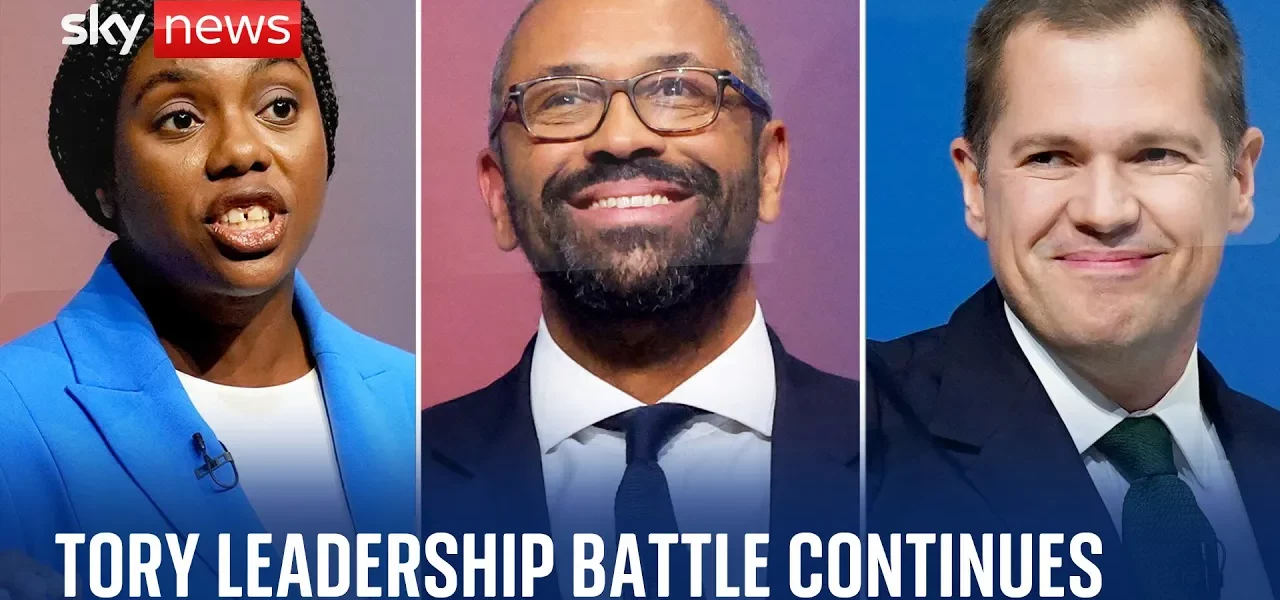Surprising Twists in the Conservative Leadership Contest

This article explores the latest developments in the Conservative leadership race, highlighting the unexpected outcomes and the fierce competition among candidates James Cleverly, Kemi Badenoch, and Robert Jenrick. With a focus on the political strategies and voter dynamics, we delve into what these results mean for the future of the party.
Introduction
The Conservative leadership contest has been nothing short of a rollercoaster ride, with candidates experiencing dramatic shifts in support and momentum. As of the latest parliamentary ballot, the unexpected elimination of James Cleverly, who was once seen as a frontrunner, has left political analysts and party members questioning the strategies at play. This article breaks down the key events, analysis of the candidates, and implications for the Conservative Party moving forward.
Key Events Leading to the Current Situation
Initial Frontrunners and Shifting Dynamics
In the early stages of the contest, James Cleverly surged ahead with a significant lead, securing 39 votes in the previous round. However, Kemi Badenoch and Robert Jenrick were not far behind, displaying strong capabilities and garnering support from different factions within the party.
- James Cleverly: 39 votes
- Kemi Badenoch: 30 votes
- Robert Jenrick: 31 votes
The Surprise Elimination
In a shocking turn of events, during the fourth and final parliamentary ballot, James Cleverly was eliminated with only 37 votes, paving the way for Kemi Badenoch and Robert Jenrick to advance. This outcome has sparked intense discussions regarding the voting behavior and strategic maneuvers of Conservative MPs.
Candidate Profiles and Their Strategies
Kemi Badenoch: The Right’s Champion
Kemi Badenoch has positioned herself as a staunch advocate for conservative values, appealing to the party’s right wing. Her campaign promises include:
- Ideological purity and a comprehensive review of government policies.
- A strong stance on immigration and public safety.
- Commitment to leaving the European Convention of Human Rights.
Robert Jenrick: Balancing Tradition and Change
Robert Jenrick has focused his campaign on addressing immigration issues while also appealing to moderate conservatives. His key messages include:
- Maintaining a robust immigration policy that aligns with party values.
- Promoting health care reforms to enhance NHS efficiency.
- Engagement with both traditionalist and progressive factions within the party.
The Role of Party Members in the Final Decision
With the parliamentary vote now complete, the decision moves to the members of the Conservative Party. Approximately 170,000 members will have the final say, making it critical for both Kemi Badenoch and Robert Jenrick to appeal to a broader base.
Understanding Member Preferences
Polling indicates that party members desire candidates who represent conservative ideological purity. This sentiment poses a challenge for candidates like James Cleverly, who attempted to appeal to the center ground:
- Members are likely to favor candidates who align closely with traditional conservative values.
- Efforts to secure votes from the center may backfire, as seen in Cleverly’s elimination.
- The dynamics between Badenoch and Jenrick will be closely watched for shifts in support.
Conclusion
The Conservative leadership contest is a vivid illustration of the unpredictable nature of political dynamics. With Kemi Badenoch and Robert Jenrick now in contention, the race is set to become even more intense. As voters and analysts alike await the final decision from party members, it is evident that strategies will evolve, and alliances may shift. The question remains: who will ultimately capture the support of the Conservative base? Stay tuned as we continue to analyze the developments in this pivotal moment for the party. Read more about the implications of these results.
“`




